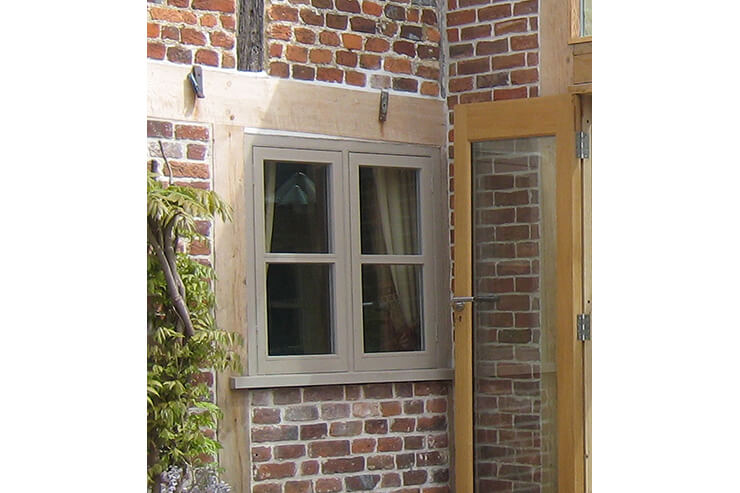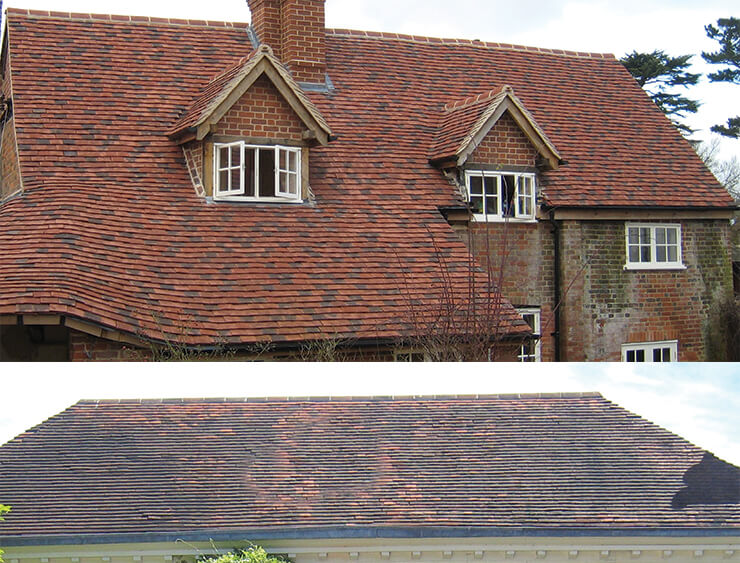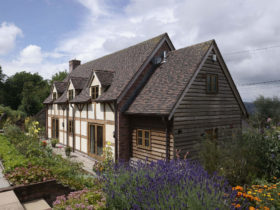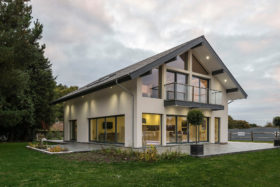
Early Bird Offer! Free tickets to meet independent experts at this summer's Build It Live
Save £24 - Book Now!
Early Bird Offer! Free tickets to meet independent experts at this summer's Build It Live
Save £24 - Book Now!Careful use of reclaimed architectural features in a period home project may have many benefits, but architectural salvage is a controversial subject. Some heritage organisations are completely opposed to it. Most, however, recognise that reclaimed materials can make a positive contribution to the refurbishment of a heritage home.
Nevertheless, if you choose to re-use building materials and features in your own project, it’s essential to be aware of the problems and proceed with caution.
The main objection to the use of salvage is that it creates a market for stolen or looted material, encouraging crime, leading to traumatic losses for homeowners and irreparable damage to historic buildings. This is undoubtedly true: fireplaces are ripped out of Georgian and Victorian homes, roofs are stripped etc – often to order. This kind of ‘heritage crime’ can be a major problem and there is a section at the bottom end of the salvage market that effectively operates to fence stolen or looted goods.
There are many established, reputable operators who are careful to check the provenance and legitimacy of the stock they handle. However, the onus is very much on you as a customer to ensure that any yard you deal with is reputable and to ask appropriate questions about the source of what you are buying.
There is a well-established industry standard – the Salvo Code – that sets out best business practices. It’s a very good starting point to check whether your dealer is a currently Salvo registered.
There is a debate about the extent to which using reclaimed material in an old building can have a detrimental effect on its character. The most extreme view is that any work should be clearly of its time, using new materials, so that the development of the building can be clearly seen.
However, this is often not practical for repair or refurbishment because there is a risk it will leave an unsatisfactory mishmash of old and new. Where we use modern materials in these circumstances, we take great care to match it to the old in appearance and performance.
The real problems come when reinstating missing features or replacing what has been irreparably damaged. A common failure here is going too far and incorporating large parts of another building (or several buildings) in an effort to restore what is thought to be lost. This can result in a confusing pastiche, detracting from the character and value of the house.
What can often happen is that the reclaimed elements are from a house of a different date, style or form of construction. A lot of care is needed or the period elements will look a lot less appropriate than something new.
 The infill panels of the repaired wall to the left use reclaimed bricks; the new-build extension to the right has new handmade ones |
There is also concern that the use of salvaged materials stifles the market for manufacturing new, high-quality products appropriate for use in old buildings. Conversely, buying new handmade bricks, tiles or similar tends to stimulate that market, increasing availability and reducing prices.
To a great extent this is also a practical issue, since sourcing new bricks, tiles and, increasingly, joinery is both practicable and affordable. However some items (ironmongery, for example) of appropriate style, quality and finish can be impossible to find anywhere except from salvage.
It can be difficult to source a sufficient quantity of reclaimed materials for a sizeable project. A huge amount of time can be spent scouring salvage yards for a sufficient matching quantity for the job. If you’re not careful this can add considerable extra time and cost to your project.
Once you are committed to sourcing reclaimed materials for a scheme, it can be easy to be dragged into compromise. This means you’ll finish up with elements that match one another but not the original, or which are similar but not quite the same – for example, historical features such as radiators or fireplaces.
Many building materials have a limited life. Reusing them after they have served a substantial portion of that term already will inevitably reduce the longevity of your refurbishment. Reclaimed bricks may be serviceable for facing or for infill panels where they don’t carry any structural load, but are unlikely to be a good idea for structural work.
Salvaged clay tiles should only ever be used for small-scale patching of an otherwise sound roof – re-covering a whole roof in anything other than new tiles would be a very poor economic decision, because they would not last.
 Compare the worn, patchy look of a roof re-covered with reclaimed tiles (bottom) to one that uses new handmade products (top), which looks much better and will last longer, too |
Reclaimed timber needs to be very carefully inspected before it can be reused. Exposure to damp can cause significant damage and weakening from decay or beetle attack. It’s inevitable that most old buildings that have had to be demolished will have been in poor condition, presenting high risk to any timber in the structure.
The process of reclamation itself can cause damage or disfigurement. Check the condition of a good selection of any batch before you buy – not just the ones that are on top! There is a particular problem with reclaimed bricks, which are often just knocked down and stacked up ready for sale and re-use, complete with their paint, plaster and even mortar still attached. At worst these will be unusable; at best they will require hours of labour to clean them before they are ready to lay.
So long as you are fully aware of the potential pitfalls surrounding salvage, careful use of reclaimed elements can be a significant benefit. A large proportion of refurbishments will make use of them at some stage.
Often the best use of salvaged items is for a few key features that are characteristic of the property, especially repeated elements of which one or two are missing. Unless they are of an easily worked material like plaster or wood, to have these made in replica can be difficult and expensive. Without a very high degree of craftsmanship, the results can be unsatisfactory. Reclaimed originals will almost always look better and (especially if they date from after the start of mass-production) are likely to be much cheaper.
 This iron balustrade from salvage creates a great feature – to have it made new would have been unaffordable |
Some original building components were made to a higher standard than is practicable today, either because of available materials or the cost of the craftsmanship. This is generally true of Georgian brasswork, for example.
The quality of softwood that was available before the First World War was vastly superior to anything that can be found today – reclaimed softwood elements will be much more durable and resistant to decay
Great effort is made to maintain the stock of old buildings, but some inevitably come to the end of their life and have to be demolished; others fall victim to development or infrastructure projects. These are the legitimate source of salvaged material.
Reusing the fabric of these old buildings is the most sustainable outcome. If the material cannot be reused, it will finish up in landfill; the manufacture of new building materials is energy intensive and greatly increases the carbon impact of a project.
There is a long and distinguished history of reusing construction materials. It was standard practice in the past to incorporate bits of previous structures from the site during new building work. This was particularly true of expensive elements, such as large oak beams – there are very many timber-framed houses that have incorporated timbers that previously had an alternative function in a different building.
Main image: The house on the right has its original door and fanlight; on the left, the door is new but the fanlight is salvaged


Comments are closed.